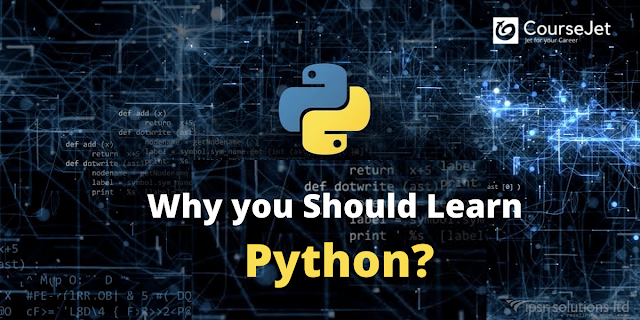What is Python?
What is Python?
Python is a
high-level, object-oriented, interpreted programming language with dynamic
semantics. Its high-level data structures, combined with dynamic typing and
dynamic linking, make it very attractive for Rapid Application Development, as
well as being used as a scripting language or glue to connect existing
components.
Python's
simple and easy-to-learn syntax emphasizes readability and therefore reduces
the cost of maintaining the program. Python supports modules and packages,
which encourages program modularity and code reuse. The Python interpreter and
extensive standard library are available in source or binary format at no cost
to all major platforms and can be freely distributed.
Programmers
often fall in love with Python because of the increased productivity it
provides. Since there is no compilation step, the edit-test-debug cycle is
incredibly fast. Debugging Python programs is easy: an error or an incorrect
entry will never cause a segmentation failure. Instead, when the interpreter
discovers an error, it throws an exception. When the program does not catch the
exception, the interpreter prints a trace of the stack.
A source-level debugger allows inspection of local and global variables,
evaluation of arbitrary expressions, the definition of breakpoints, revision of
code one line at a time, etc. The debugger is written in Python, which
demonstrates the introspective power of Python. On the other hand, generally, the fastest way to debug a program is to add some print instructions to the
font: the quick edit, test and debug cycle makes this simple approach very
effective.
Click Here - Get Python 100% Practical Training
Why Python?
- Python works on different platforms (Windows, Mac, Linux, Raspberry Pi, etc.).
- Python has a simple syntax, similar to the English language.
- Python has a syntax that allows developers to write programs with fewer lines than other programming languages.
- Python runs on an interpreter system, which means that the code can be executed as soon as it is written. This means that prototyping can be very fast.
- Python can be handled procedurally, object-oriented, or functional.
How is Python used?
Python is a general-purpose programming language, which is another way of saying that it
can be used for almost anything. Most importantly, it is an interpreted
language, which means that the written code is not actually translated into a
computer-readable format at runtime. While most programming languages do this
conversion even before the program runs.
This type of
language is also known as a "scripting language" because it was
originally designed for use in trivial projects. The concept
of a "scripting language" has changed considerably since its
inception, because Python is now used to write large commercial-style
applications, rather than just trivial applications. This dependency on Python
has increased further as the Internet has gained popularity.
The vast
majority of web apps and platforms rely on Python, including the Google search
engine, YouTube, and the New York Stock Exchange (NYSE) web-oriented
transaction system. You know that language must be very serious when turning on
a trading system.
In fact,
NASA actually uses Python when programming its space equipment and machines.
Well done, right?
Python can
also be used to process text, display numbers or images, solve scientific
equations, and save data. In short, it is used behind the scenes to process
many items you may need or find on your device (s), including your cell phone.
Click Here - Get Python Certification


Comments
Post a Comment